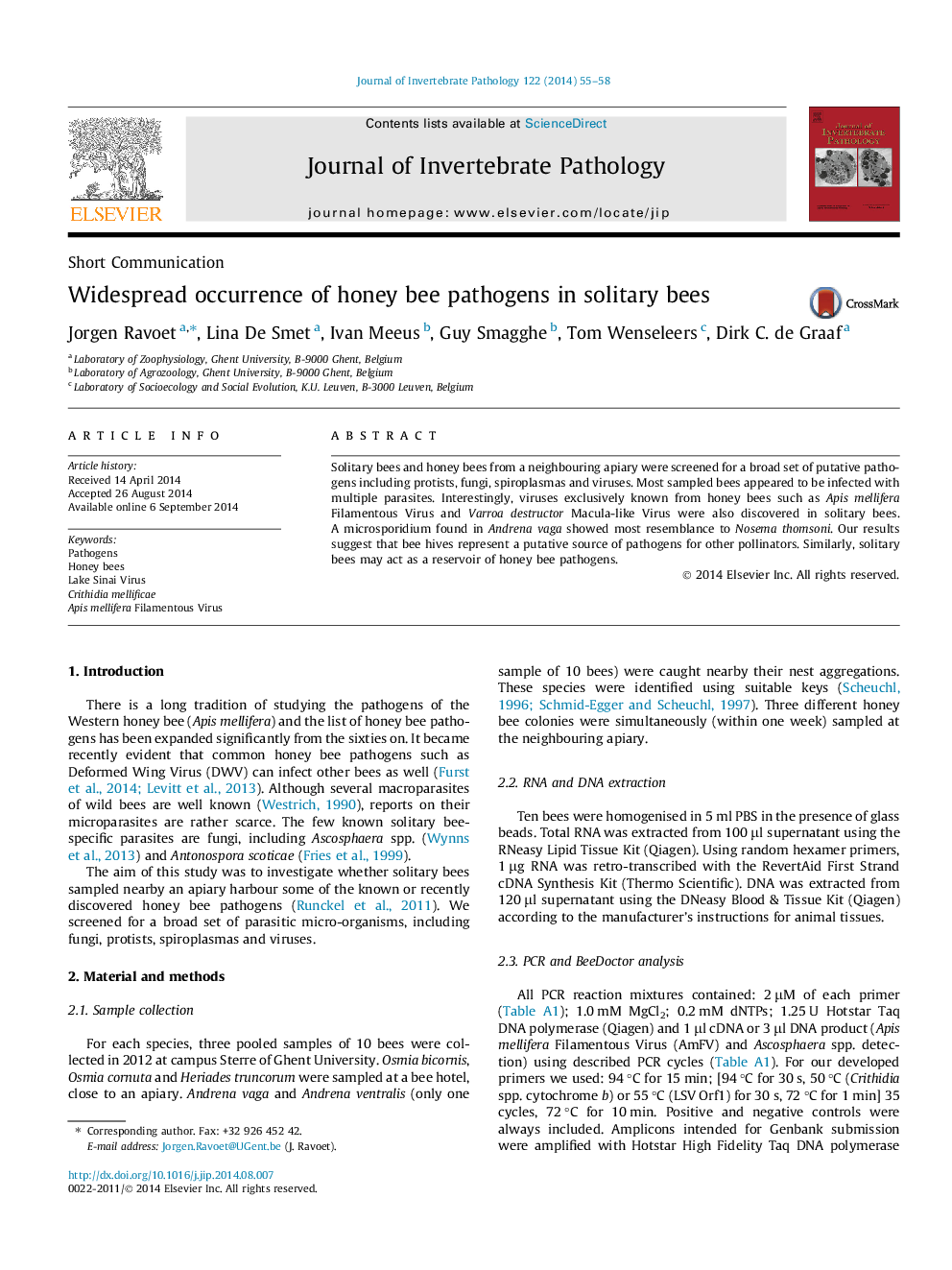| Article ID | Journal | Published Year | Pages | File Type |
|---|---|---|---|---|
| 6389458 | Journal of Invertebrate Pathology | 2014 | 4 Pages |
â¢Typically honey bee viruses were also detected in solitary bees.â¢VdMLV was retrieved in solitary bees, which are not a known host of Varroa mites.â¢Some parasites were detected in previously unknown hosts.â¢Other pathogens appeared to be restricted to honey bees.â¢Ascosphaera fungi without strong match were retrieved from solitary bees.
Solitary bees and honey bees from a neighbouring apiary were screened for a broad set of putative pathogens including protists, fungi, spiroplasmas and viruses. Most sampled bees appeared to be infected with multiple parasites. Interestingly, viruses exclusively known from honey bees such as Apis mellifera Filamentous Virus and Varroa destructor Macula-like Virus were also discovered in solitary bees. A microsporidium found in Andrena vaga showed most resemblance to Nosema thomsoni. Our results suggest that bee hives represent a putative source of pathogens for other pollinators. Similarly, solitary bees may act as a reservoir of honey bee pathogens.
Graphical abstractDownload full-size image
